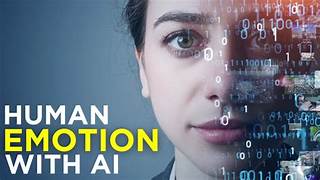The Challenges of AI in Understanding Human Emotions
Artificial intelligence (AI) has made remarkable strides in recent years, transforming industries, streamlining processes, and creating new opportunities. Among its most ambitious goals is the attempt to understand and interpret human emotions—a critical component of effective communication, decision-making, and human interaction. However, while AI has shown promise in recognizing basic emotional cues, it faces significant challenges in accurately understanding and responding to the complexities of human emotions. This article explores these challenges, the progress made so far, and the implications for the future of AI-driven emotional intelligence.
The Importance of Emotion in Human Interaction
Human emotions are deeply intertwined with our thoughts, behaviors, and decisions. They influence how we interact with one another, interpret events, and respond to our environment. In applications such as healthcare, education, customer service, and mental health support, understanding emotions is essential for creating meaningful and effective interactions.
For AI to truly integrate into human-centric roles, it must go beyond functional tasks and develop emotional intelligence. Emotional AI, or affective computing, aims to bridge this gap by equipping machines with the ability to recognize, interpret, and respond to emotional signals. Despite its potential, achieving this level of sophistication presents numerous hurdles.
The Challenges of Understanding Human Emotions
1. Complexity and Variability of Emotions
Human emotions are incredibly complex and often layered. A single expression, such as a smile, might indicate happiness, politeness, or even discomfort, depending on the context. Emotions are influenced by a myriad of factors, including culture, personality, past experiences, and situational nuances. AI systems often struggle to account for these subtleties, leading to oversimplified interpretations of emotional states.
2. Cultural Differences
Emotional expressions vary significantly across cultures. For instance, while direct eye contact may indicate confidence in Western cultures, it might be considered disrespectful in others. Similarly, the way people express or suppress emotions can differ widely based on societal norms. Training AI to understand and respect these cultural variations requires diverse datasets and sophisticated algorithms capable of adapting to context-specific cues.
3. Ambiguity in Emotional Signals
Emotions are not always outwardly expressed or easy to detect. People often mask their true feelings, either intentionally or subconsciously. For example, someone might say they are “fine” while their tone or body language suggests otherwise. AI systems, which primarily rely on observable data, can struggle to interpret such discrepancies between verbal and non-verbal cues.
4. Limited Data Quality and Diversity
AI systems depend heavily on large datasets to train their models. However, datasets used for emotional AI often lack diversity in terms of age, gender, ethnicity, and cultural backgrounds. This lack of representation can lead to biased or inaccurate results. Furthermore, emotions are subjective, making it challenging to label and standardize data effectively.
5. Integration of Multimodal Data
Humans express emotions through a combination of facial expressions, voice tones, gestures, and physiological responses. Accurately interpreting emotions requires the integration of multiple data sources, a task that is computationally complex and prone to errors. For instance, an individual’s facial expression might convey one emotion while their tone of voice suggests another. Balancing and analyzing these signals in real-time remains a significant challenge.
6. Ethical and Privacy Concerns
The use of AI to analyze emotions raises ethical questions about consent, privacy, and potential misuse. Emotional data is deeply personal, and its collection and analysis without explicit permission can lead to breaches of trust and ethical violations. Additionally, the potential for misuse of emotional AI, such as in manipulative advertising or surveillance, poses significant societal risks.
7. Contextual Understanding
Emotions are heavily influenced by context. For example, tears can signify sadness, joy, or relief, depending on the situation. AI systems often lack the contextual awareness needed to interpret emotions accurately, leading to misjudgments or inappropriate responses.
Progress in Emotional AI
Despite these challenges, significant progress has been made in the field of emotional AI. Technologies such as natural language processing (NLP), computer vision, and wearable sensors are enabling machines to recognize and respond to emotional cues with increasing accuracy.
1. Facial Recognition and Analysis
Advanced facial recognition technologies can detect micro-expressions and analyze facial movements to infer emotions. Companies like Affectiva and Realeyes have developed tools that assess emotions based on facial data, which are used in applications ranging from market research to automotive safety.
2. Voice Emotion Recognition
AI systems can analyze speech patterns, tone, pitch, and rhythm to identify emotional states. For instance, virtual assistants like Alexa and Siri are being equipped with capabilities to detect frustration or happiness in a user’s voice.
3. Text Analysis
Natural language processing enables AI to detect emotions in written text by analyzing word choices, sentence structures, and contextual meaning. Sentiment analysis tools are widely used in customer service to gauge user satisfaction and adapt responses accordingly.
4. Wearable Technology
Wearable devices equipped with sensors can measure physiological signals such as heart rate, skin conductance, and temperature to infer emotional states. These devices are being used in mental health monitoring and stress management applications.
Implications for the Future
As emotional AI continues to evolve, its potential applications span a wide range of industries:
1. Mental Health Support
AI-driven tools can provide early detection of mental health issues by monitoring emotional patterns. Virtual therapists and chatbots are already being developed to offer support and guidance, making mental health resources more accessible.
2. Customer Experience
Businesses can use emotional AI to enhance customer experiences by tailoring interactions based on detected emotions. For example, an AI-powered chatbot could adjust its tone or approach if it detects frustration in a customer’s voice.
3. Education
Emotional AI can improve online learning platforms by monitoring student engagement and emotions. This data can help educators adapt their teaching methods to better meet individual needs.
4. Healthcare
In healthcare settings, emotional AI can assist in patient care by detecting signs of distress or discomfort. It can also be used in therapeutic settings to monitor progress and adapt treatment plans.
Addressing the Challenges
Overcoming the challenges of AI in understanding human emotions requires a multidisciplinary approach:
- Improving Data Diversity: Expanding datasets to include a wide range of cultural, linguistic, and demographic variations will enhance AI’s ability to interpret emotions accurately.
- Advancing Multimodal Analysis: Developing algorithms capable of integrating data from multiple sources (e.g., facial expressions, voice, and text) will improve contextual understanding.
- Ethical Frameworks: Establishing clear ethical guidelines for the use of emotional AI will protect user privacy and prevent misuse.
- Human-AI Collaboration: Combining AI capabilities with human expertise can bridge gaps in understanding and ensure more accurate and empathetic interactions.
Conclusion
Understanding human emotions remains one of the most complex challenges for AI. While significant progress has been made, the intricacies of emotions, cultural differences, and ethical considerations highlight the need for continued research and innovation. By addressing these challenges, emotional AI has the potential to enhance human-AI interactions, foster empathy, and create a more connected and understanding world.


